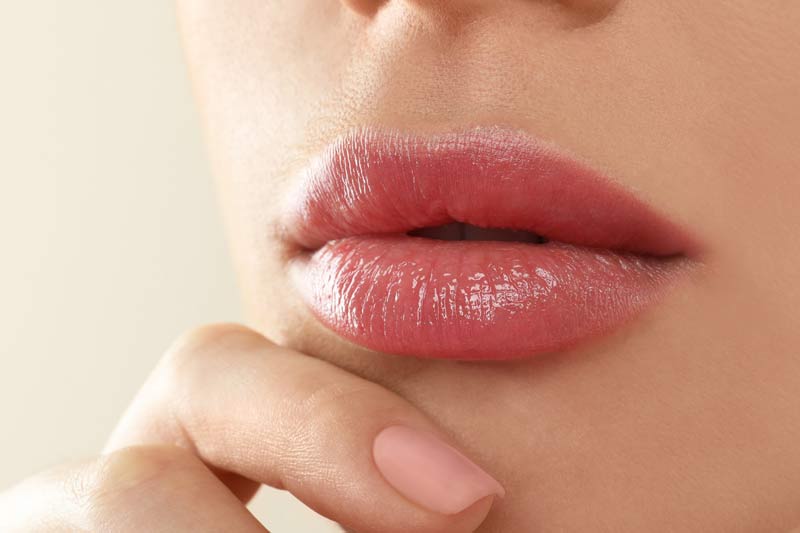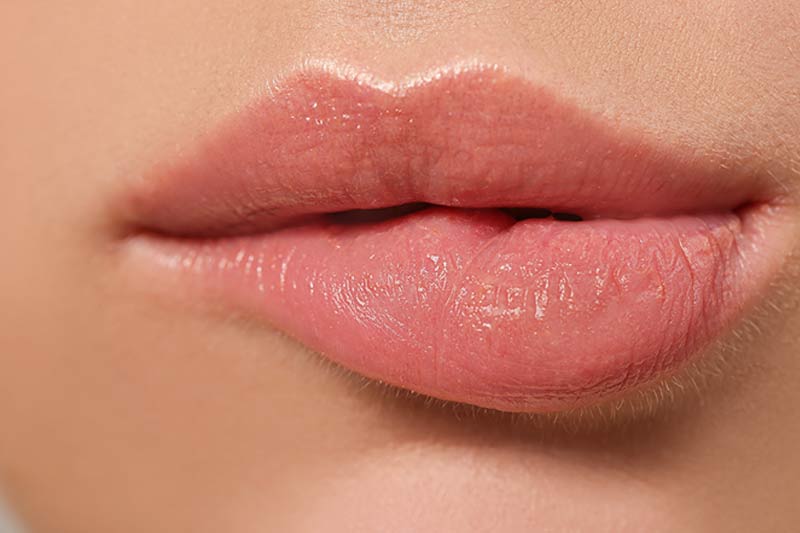Dermal fillers are lauded as an effective cosmetic procedure for wrinkle reduction, facial contouring, and scar improvement. This popular aesthetic treatment is minimally invasive but not without risks. Occasionally, the injected product can spread to unintended areas due to various factors, resulting in asymmetry, distorted features, and swelling.
This article explains what causes filler migration, how it manifests, and what you can do to restore the desired look.

What Is Filler Migration?
Filler migration occurs when the injected product moves from its original location to adjacent tissues, resulting in lopsided, unnatural, or swollen features. Depending on the treatment area, the outcome can be a noticeable loss of definition, lumps, rough texture, or skin inflammation.
What Causes Filler Migration?
Poor aftercare or poor injection technique, performed by an inexperienced injector, can provoke filler migration. Several other factors can also cause this undesirable outcome.
Below is a list of the most common causes of dermal filler migration.
Incorrect Injection Technique
The provider may insert the needle in the wrong tissue plane, at the wrong angle, or inject the filler too superficially, causing the product to spread to adjacent areas. An under-qualified injector may also administer the product too quickly or imprecisely, unintentionally damaging lymph or hitting a blood vessel.
Overfilling

Injecting too much filler can overstretch the skin, distort the features, cause lumps, and filler migration. Each filler area has a limited space to hold the product, and the provider must not exceed this limit.
Lips and the under-eye area are most likely to become overfilled due to thinner skin and limited space for the filler to occupy.
Note: Learn what happens if you get too much cheek filler.
Inappropriate Filler Type
An unsuitable filler type can cause the product to shift. Each filler type has a unique G prime rating based on its consistency. They vary in viscosity, lifting capabilities, and formulations. Some fillers are more elastic and pliable, while others have a denser, firmer composition. Depending on their formula, they achieve different results.
Using Lesser-Known Brands
Some less well-established brands lack stringent quality control and do not undergo rigorous clinical testing to ensure safety and efficacy. They may also use lower-quality ingredients or produce inconsistent product formulations that cause unpredictable shifts under the skin.
Choose a reliable provider that administers only reputable, FDA-approved filler brands, such as Juvéderm, Restylane, and Revanesse Versa.
Excessive Pressure
Applying gentle pressure to massage the injected area ensures even distribution. However, the filler can migrate to adjacent areas if the pressure is too intense or the movements too abrupt.
Refrain from touching, pressing, rubbing, or squeezing the injected spot to prevent this side effect.
Frequent Follow-Ups
Repeated treatments increase the likelihood of filler displacement. Placing filler on top of filler prompts the product to spread unevenly. Unnecessary adjustments and frequent follow-ups can lead to overcorrection, resulting in a puffy, bloated appearance.
Frequent touch-up sessions can disrupt the healing process and prolong swelling and inflammation.
Not Customizing the Treatment
An inexperienced practitioner is less likely to tailor each treatment to the patient’s unique facial anatomy. Disregarding natural asymmetries and unique physical attributes may result in over-injection that causes filler displacement.
Unexpected Immune Response
Some individuals are more sensitive to different filler components and may develop an allergic reaction. They may even experience a strong immune response, resulting in blocked lymphatic channels and unexpected filler movement.
Inform your filler provider about medications you are taking, allergies you have had, and vaccines you have received recently to help prevent this side effect.
Rapid Degradation
Metabolism may also increase the risk of filler migration. People with a higher metabolic rate may start breaking down the hyaluronic acid too quickly, lessening the treatment’s effect, shortening its longevity, and causing unpredictable shifts due to uneven distribution.
Repetitive Facial Movements
Expressive facial movements such as frowning, yawning, chewing, smiling, or pursing may cause the filler to spread. Those who engage in activities that require repetitive facial movements (e.g., musicians who play wind instruments) and individuals who clench their jaw during sleep are more likely to experience filler migration.
Improper Aftercare
Patients who fail to follow dermal filler aftercare guidelines are at a greater risk of filler side effects, including migration. Vigorous physical exertion, exposure to heat, and pressing on the injected area may all lead to changes in filler positioning.
Which Filler Is Most Likely to Migrate?
Filler types that typically cause the filler to move from its original placement have the following characteristics:
- Jelly-like consistency
- Thin
- Soft
- Fluid
- Non-cross-linked formula
Studies show that filler migration is most likely to happen in areas with high mobility or thin skin, such as the lips, tear troughs (under-eye area), and around the mouth, and that permanent fillers composed of solid particles are least likely to shift.
How Soon After Filler Can You See Migration?
Depending on the filler type and the treated area, migration can become noticeable within a few days, especially if the cause is overfilling or external pressure.
Migration due to poor injection technique, frequent follow-up treatments, and repetitive muscle movements may become visible after several months as the product slowly integrates with the surrounding tissue.
How to Recognize Filler Migration?
In the days following the treatment, monitor the treated area closely for any irregularities. Consult the practitioner who performed the procedure if you observe any of the following symptoms.
- Changes in filler location
- Uneven skin texture
- Lumps or bumps
- Asymmetrical features
- Unusual or persistent swelling
- Prolonged bruising
- Loss of definition
- Numbness
- Tenderness
- Difficulty moving facial muscles
- Persistent or increasing inflammation
How to Avoid Filler Migration?
You can significantly reduce the risk of filler migration by following post-treatment guidelines and taking the following preventive measures:
- Choose a qualified injector who specializes in the treatment area you wish to enhance and understands facial anatomy and proper injection techniques.
- Discuss the best filler brand options for the cosmetic concern you wish to address (e.g., nasolabial folds, forehead, jawline, or cheeks).
- Follow aftercare guidelines to reduce the risk of adverse effects.
- Avoid alcohol.
- Avoid making excessive facial movements that compromise the stability of the filler.
- Leave enough time between touch-up sessions and listen to your provider’s recommendations to avoid overcorrection.
- Monitor the early signs of migration and promptly report any concerns to your provider.
- Maintain realistic expectations about the results, as outcomes vary from person to person due to differences in facial structure, skin type, and metabolic rate.
How to Fix Filler Migration?
Filler treatments can go wrong in various ways, but there are solutions for the problem of migration. Consider the following steps and consult your chosen provider for more information.
Schedule Another Visit
Monitor the progress with regular follow-up appointments and get professional advice on your next step. The injector will decide if any adjustments are necessary or if you should wait for the product to dissolve naturally.
Wait For the Filler to Naturally Dissolve
Hyaluronic-acid-based fillers are designed to dissolve naturally. The body slowly breaks down the product, absorbing the content and lessening the initial effects.
If the undesired outcome is mild, it is best to wait for the product to gradually break down on its own.
Dissolve the Filler with Hyaluronidase
HA-based fillers can be dissolved with hyaluronidase injections. Hyaluronidase is an enzyme that accelerates the breakdown of the product, reversing the undesired effects such as swelling and asymmetrical or distorted features.
Only a licensed medical professional can safely and effectively administer these injections for optimal results.
Massage the Area

Gentle massage by a trained professional can help redistribute the filler, enhance integration, and promote even settling. Massage also improves circulation, which aids in healing and speeds up recovery.
Avoid applying pressure to the treated area yourself. Improper technique can worsen the condition or cause additional problems.
Top-Up Treatments
The provider may suggest reinjection to correct asymmetry and balance the appearance. However, it is important to note that these follow-up sessions should be meticulously pre-planned and additional injections carefully placed to reduce the risk of further migration.
What Happens If You Do Not Treat Filler Migration?
Filler migration is rare and typically does not cause serious complications. However, failure to address it promptly may trigger or worsen unwanted symptoms.
The risks associated with untreated filler migration are the following:
- Prolonged swelling
- Lumps or bumps
- Discomfort or pain
- Persistent skin discoloration
- Infection
- Scarring
- Altered tissue structure
- Vascular occlusion
- Psychological impact
Conclusion
Migration is a dreaded, albeit rare, complication associated with dermal fillers. Learning to prevent or manage the symptoms is vital if you wish to enjoy the rejuvenating effects of this cosmetic procedure. Schedule a visit with a board-certified filler injector to learn about potential side effects and ways to minimize them.
Contact our friendly experts at Vibrant Skin Bar for more information about this topic.


